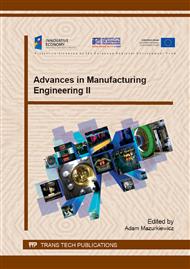p.209
p.215
p.221
p.227
p.233
p.239
p.245
p.251
p.257
High-Energy Impact Certification of Aero Structures: Experiments and Numerical Simulations
Abstract:
The article presents the test results obtained from the “Research methods and systems for the investigation on impact resistance of elements of aero structures and land vehicles aimed at the assessment of passenger safety” R&D project that was jointly executed by the Institute of Aviation, the Institute for Sustainable Technologies – National Research Institute, and the PZL Mielec. The main objective of the project was to perform impact tests of the windscreen and the vertical stabilizer of the PZL M28 Skytruck. The experimental tests were conducted for real objects in full scale. The investigations were carried out using an original 250 mm pneumatic gun. Apart from the impact tests, the project was also focused on numerical simulations of impacts employing the Finite Element Method (test object modelling) and the Smoothed Particle Hydrodynamics methods (the model of the gelatine projectile). The authors compare the results of experimental tests and numerical simulations. They present the differences in the results obtained and analyse the reasons behind these discrepancies, and based on the analysis, they conclude that the main cause for them is the simplified mathematical model describing the behaviour of the material subjected to dynamic loads, which was used in numerical simulations.
Info:
Periodical:
Pages:
233-238
Citation:
Online since:
August 2015
Authors:
Keywords:
Price:
Сopyright:
© 2015 Trans Tech Publications Ltd. All Rights Reserved
Share:
Citation:


